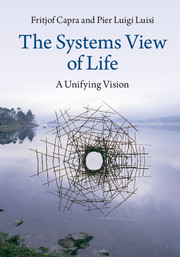Book contents
- Frontmatter
- Dedication
- Contents
- Preface
- Acknowledgments
- Introduction Paradigms in science and society
- I The mechanistic worldview
- II The rise of systems thinking
- III A new conception of life
- 7 What is life?
- 8 Order and complexity in the living world
- 9 Darwin and biological evolution
- 10 The quest for the origin of life on Earth
- 11 The human adventure
- 12 Mind and consciousness
- 13 Science and spirituality
- 14 Life, mind, and society
- 15 The systems view of health
- IV Sustaining the web of life
- Bibliography
- Index
12 - Mind and consciousness
from III - A new conception of life
Published online by Cambridge University Press: 05 April 2014
- Frontmatter
- Dedication
- Contents
- Preface
- Acknowledgments
- Introduction Paradigms in science and society
- I The mechanistic worldview
- II The rise of systems thinking
- III A new conception of life
- 7 What is life?
- 8 Order and complexity in the living world
- 9 Darwin and biological evolution
- 10 The quest for the origin of life on Earth
- 11 The human adventure
- 12 Mind and consciousness
- 13 Science and spirituality
- 14 Life, mind, and society
- 15 The systems view of health
- IV Sustaining the web of life
- Bibliography
- Index
Summary
One of the most important philosophical implications of the new systemic understanding of life is a novel conception of the nature of mind and consciousness, which finally overcame the Cartesian division between mind and matter. In the seventeenth century (as we discussed in Chapter 1), René Descartes based his view of nature on the fundamental division between two independent and separate realms – that of mind, the “thinking thing” (res cogitans), and that of matter, the “extended thing” (res extensa). This conceptual split between mind and matter has haunted Western science and philosophy for more than 300 years.
Following Descartes, scientists and philosophers continued to think of the mind as an intangible entity and were unable to imagine how this “thinking thing” is related to the body. Although neuroscientists have known since the nineteenth century that brain structures and mental functions are intimately connected, the exact relationship between mind and brain remained a mystery. Less than ten years ago, the editors of an anthology titled Consciousness in Philosophy and Cognitive Neuroscience, Revonsuo and Kamppinen (1994, p. 5), stated frankly in their introduction: “Even though everybody agrees that mind has something to do with the brain, there is still no general agreement on the exact nature of this relationship.”
- Type
- Chapter
- Information
- The Systems View of LifeA Unifying Vision, pp. 252 - 274Publisher: Cambridge University PressPrint publication year: 2014

